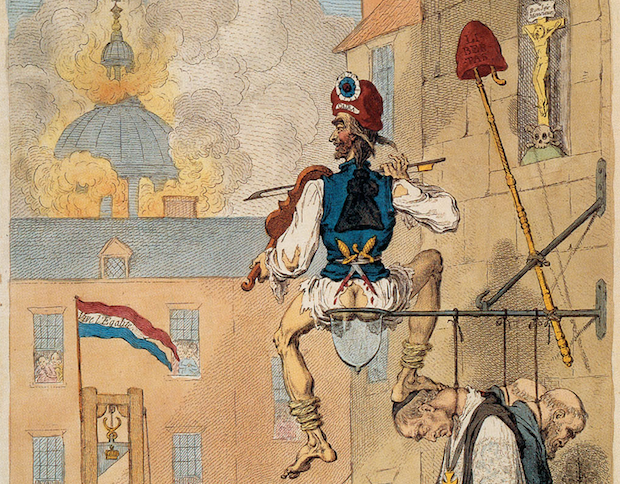For his holiday reading in the summer of 1835, the literary and political journalist John Wilson Croker packed the printed lists of those condemned to death during the Reign of Terror in revolutionary France. The several thousand guillotined in Paris after the establishment of the Revolutionary Tribunal (10 March 1793) and before the fall of Maximilien Robespierre (27 July 1794), were accused of crimes ranging from hoarding provisions or conspiring against the republic to sawing down a tree of liberty or declaring ‘A fig for the nation!’ In horrified disbelief Croker asked the question that has never gone away: how could this have happened? How could the progressive revolutionary optimism of 1789 have turned in just five years to summary arrests and executions?
Two new books shed light on this murky topic. In The Coming of the Terror in the French Revolution, Timothy Tackett, Professor of History at the University of California, analyses the mentalité of those who became ‘terrorists’ in 18th-century France. In a previous book, Becoming a Revolutionary (1997), Tackett wrote about the mentalité of those who took responsibility for designing a new French constitution in 1789. In extending his work into the period of the Terror, Tackett engages directly with Croker’s question: how did the revolutionaries and their revolution go so wrong?
Fear, unsurprisingly, turns out to be foundational for the perpetrators of terror: ‘Terrorists themselves felt terrorised.’ Fear, Tackett argues, was a central element in revolutionary violence: fear of invasion, chaos, anarchy, conspiracy and vengeance. By 1793, such fears were rational. France was embroiled in both a civil and international war. There had been no stable government or system of public finance since before 1789.
In his reconstruction of both the emotional and rational repertoires of revolutionary behaviour, Tackett relies on contemporary letters and diaries. These sources, he suggests, are less mediated than memoirs or retrospective histories.







Comments
Join the debate for just £1 a month
Be part of the conversation with other Spectator readers by getting your first three months for £3.
UNLOCK ACCESS Just £1 a monthAlready a subscriber? Log in